|



|
FROM SITE SELECTION
MAGAZINE, NOVEMBER 2022 ISSUE
|
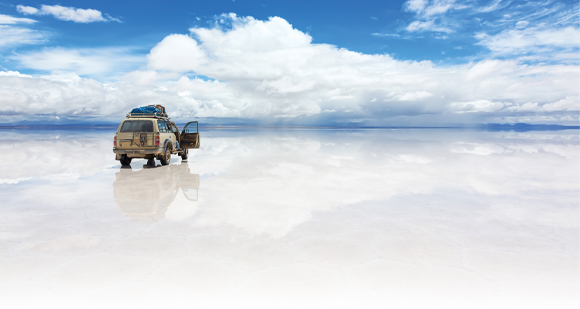
|
SOUTH AMERICA
The “Lithium Triangle” of Bolivia, Argentina and Chile is believed to
contain roughly half of the world’s known lithium. If you want to apply
to extract it, as one company learned in Bolivia this year, you’d better
turn in your homework on time.
|
|
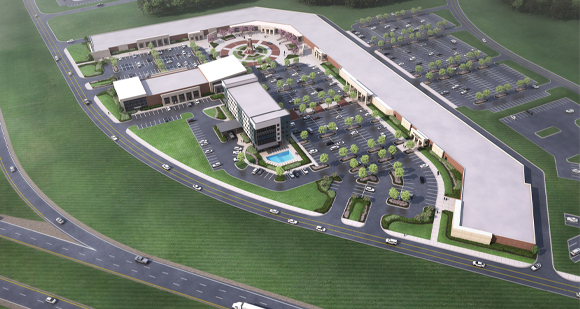
|
MISSISSIPPI
Years of diligent planning pay off as the Magnolia State solidifies a
new training program based on eight micro regions.
|
|
 
|
|
Site Selection readers are already familiar with the headquarters location strategy insights of The
Boyd Company. This week I ran across another deep, data-based analysis
from Vega Economics, which in August released a report on U.S.
relocations of corporate headquarters between 2009 and 2021. The
in-depth report is based on examining financial statement data sets from
SEC filings and doing the math to find the net flow of HQs (arrivals and
departures) over that time period.
Texas is the somewhat predictable winner over those 12 years, with a net
gain of 117 headquarters. Next come Massachusetts (36), Florida (30) and
Arizona (24), with Illinois, Virginia and Georgia also showing well. HQ
loss leaders include California, New York, Nevada and Utah. And yes, the
data show a gradually increasing outflow of HQs from California over the
past five years, even as other recent data from Pitchbook and the
National Venture Capital Association show more than 55,000 VC deals
there since 2014 worth nearly $800 billion.
Conway Data’s Projects Database has recorded more than 6,000 corporate
facility projects involving a headquarters component since 2015 (we do
not track HQ departures). Below are the Top 10 states for HQs. An
important distinction jumps out from the numbers: The Vega numbers,
already smaller due to their being a net value, concern relocations
only. Site Selection’s numbers count all HQ-affiliated
projects, including those from new companies and from those who
did not relocate, but reinvested where they were planted. Three cheers
for prioritizing economic gardening and business retention. — Adam
Bruns
| State |
No. of HQs |
| Texas |
610 |
| Ohio |
375 |
| Illinois |
373 |
| Florida |
285 |
| New York |
220 |
| Pennsylvania |
214 |
| Virginia |
211 |
| North Carolina |
197 |
| California |
190 |
| Indiana |
165 |
Source: Conway Data Projects Database
|
|
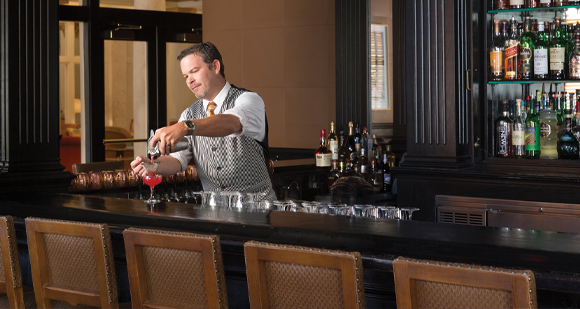
|
OVERVIEW
From talent gap to remote work and childcare, employers have their hands
full.
|
|

|
LABOR SHORTAGES
Tracey Hyatt Bosman says the effects of labor force disruption caused by
the COVID-19 pandemic are still with us today and will be well into
2023.
|
|
|
SITE SELECTION
RECOMMENDS
|
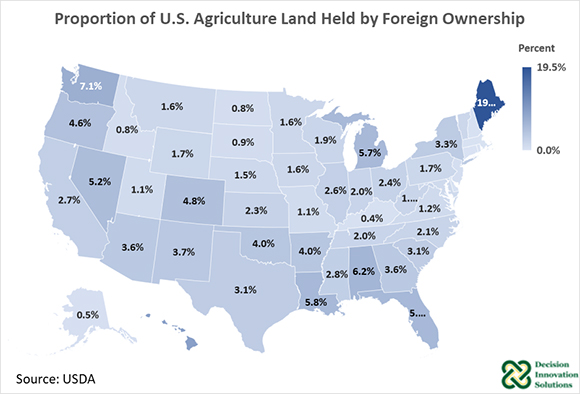
|
Map derived from USDA data courtesy of Decision Innovation
Solutions
|
|
A late November blog from Aaron Gerdts of Iowa-based
economic research and analysis firm Decision Innovation
Solutions documents state-by-state foreign
ownership of agricultural land. Based on 2020 data,
Maine has the highest percentage of foreign-owned farmland
at nearly 19.5%. Foreign ownership of U.S. ag land increased
by 14 million acres from 2011 to 2020, Gerdts reports.
Expressed as a percentage of total ag land in the state, the
states with the largest growth in foreign ownership were
Maine, Oklahoma, Michigan, Illinois, and Kansas. As of 2020,
of the 1.3 billion acres of privately held agricultural land
in the U.S., 38 million acres, or 2.9%, were held by foreign
ownership.
|
|
|
|
ARKANSAS ECONOMIC
DEVELOPMENT GUIDE 2022-23
|

|
FILM INDUSTRY
The Natural State offers a unique and beautiful setting for a growing
number of film and TV productions.
|
|

|
DEPENDABILITY
The results speak for themselves.
|
|
Arizona
Two days ago Arizona Governor Doug Ducey and Paul Charles, President and
CEO of American Battery Factory (ABF) announced that 267 acres at the
Aerospace Research Campus home to Raytheon in Tucson had been selected
as the site for the first in a planned series of battery cell
gigafactories in the United States. At 2 million sq. ft., “the site will
serve as ABF’s official headquarters and will be the country’s largest
gigafactory for the production of lithium iron phosphate (LFP) battery
cells,” the announcement stated, with an initial 300 jobs expected to
scale to 1,000 jobs eventually. Pima County took steps 10 years ago to
acquire the campus. ABF says its battery cell chemistry, which avoids
the use of cobalt and nickel, means materials are more ethically sourced
and the batteries last twice as long. “With this first factory, we will
secure a strategically positioned company headquarters while taking the
critical first steps in making it possible to one day move the country
and the entire world to 100% renewable power,” Charles said. Project
partners include Governor Doug Ducey, Arizona Commerce Authority, Sun
Corridor Inc., Pima County, City of Tucson, Pima Community College and
Tucson Electric Power.
Germany
Last Friday plastics and rubber production machinery maker KraussMaffei
took delivery of the keys to its new plant and HQ in Parsdorf. After
more than 80 years, the Munich-based company is leaving its site in
Allach and moving to this new location in the Ebersberg district just
outside Munich. “Not only does this mark the start of one of the largest
relocation projects in the greater Munich area since the airport was
moved from Riem to Erding in 1992,” said the company, “but the
commissioning is above all the final and decisive building block in the
modernization of the almost 185-year-old traditional group. Since 2018,
the company has invested a three-digit-million-euro sum in four new
sites in Germany and China. Covering over 200,000 sq. m. (more than 2.1
million sq. ft.), the new site brings together the corporate
headquarters, injection molding and reaction process machinery, additive
manufacturing, mechanical production and automation, which was
previously based in Schwaig. The new buildings in Parsdorf are part of a
new location and modernization strategy that includes the relocation of
four plants to modern, larger production facilities. Already in
operation are new plants in JiaXing (near Shanghai) and in Einbeck near
Göttingen. The relocation of the KraussMaffei Extrusion plant from
Hanover to Laatzen has also been successfully completed.
|
|
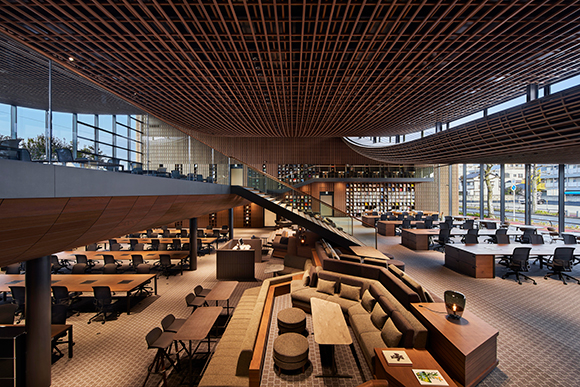
|
Photo courtesy of Hiroshi Nakamura & NAP, Takenaka Corporation and v2com
newswire
|
|
This new headquarters building for ZOZO, the company behind fashion
e-commerce site ZOZOTOWN, is located in Chiba, Japan. Designed by
Hiroshi Nakamura & NAP, Takenaka Corporation, the award-winning
“regionally integrated office” is inspired by woven fabrics and designed
to “grow with the city,” say the architects, with many quality-of-life
amenities located nearby. “The fibrous roofs and walls consist of three
woven layers of slender lumber, and drape voluminously like large pieces
of fabric that gently envelop people,” the architects say. “The air
conditioning/ventilation ducts and sound insulation material, made of
paper installed behind the fibrous roofs and walls to create a pleasant
thermal and acoustic environment, render this ‘a comfortable
clothes-like architecture’ worthy of ZOZO.”
|
| |

